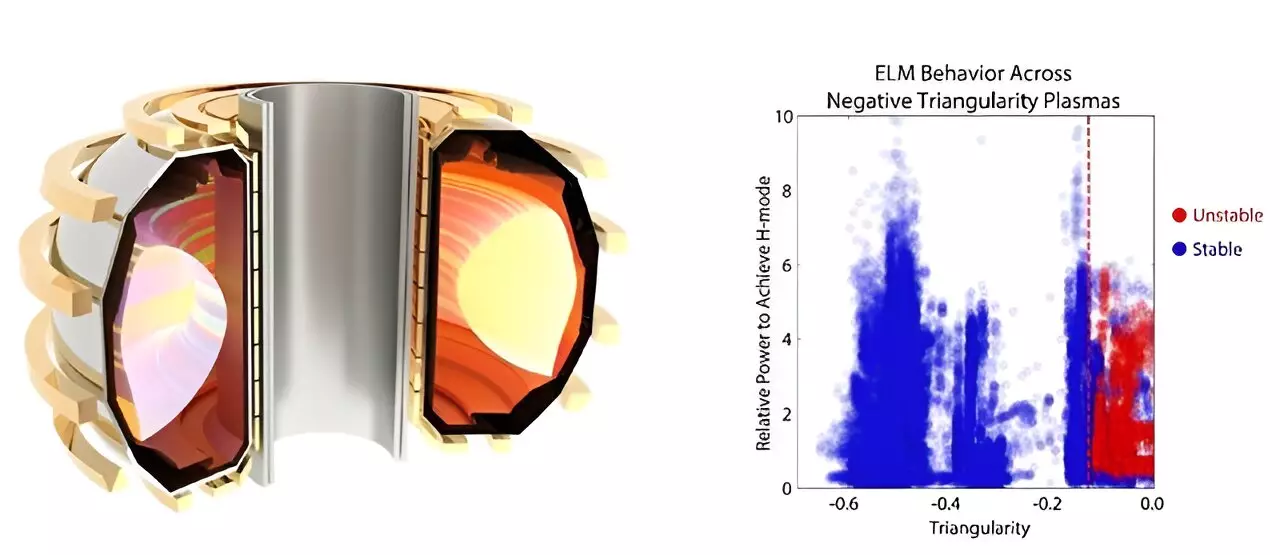Fusion power plants require specific plasma conditions to sustain fusion reactions, but often encounter instabilities such as edge localized modes (ELMs) due to gradients in temperatures and densities. These ELMs can potentially damage the reactor wall, posing a significant challenge in achieving commercial viability for fusion power plants.
Researchers have identified a key factor that can influence ELMs in fusion power plants – the cross-sectional shape of the plasma known as plasma triangularity. Positive triangularity, which represents a D-shaped cross-section with the vertical part near the center post of the tokamak, has been extensively studied. However, recent research has explored negative triangularity, which is the inverse shape with the vertical part near the outer wall.
A study published in Physical Review Letters demonstrated that negative triangularity plasmas are inherently free of instabilities across various plasma conditions. The research conducted at the DIII-D National Fusion Facility program showed that negative triangularity shaping can stabilize instabilities in the plasma edge without compromising fusion performance. This indicates that negative triangularity shaping could be a promising approach for future fusion power plant design.
Experiments conducted with the DIII-D National Fusion Facility tokamak investigated the use of negative triangularity shaping to limit the development of ELMs. Collaboration among various institutions pursuing fusion research in the United States highlighted the potential of negative triangularity shaping to prevent the formation of temperature and pressure gradients that lead to ELMs in the plasma edge.
Stability and Performance Benefits of Negative Triangularity Shaping
The study revealed that plasmas with strong negative triangularity did not exhibit any instabilities, even under high heating power and core performance conditions that typically trigger ELMs. This inherent stability achieved through negative triangularity shaping was more robust compared to other approaches such as resonant magnetic perturbations or operating in an ELM-free regime.
Implications for Fusion Power Plant Design
The findings suggest that negative triangularity shaping has the potential to address the challenges posed by high-energy, damaging plasma instabilities in fusion power plant design. Further investigation into the application of negative triangularity shaping could lead to significant advancements in achieving stable and high-performance fusion reactors.


Leave a Reply